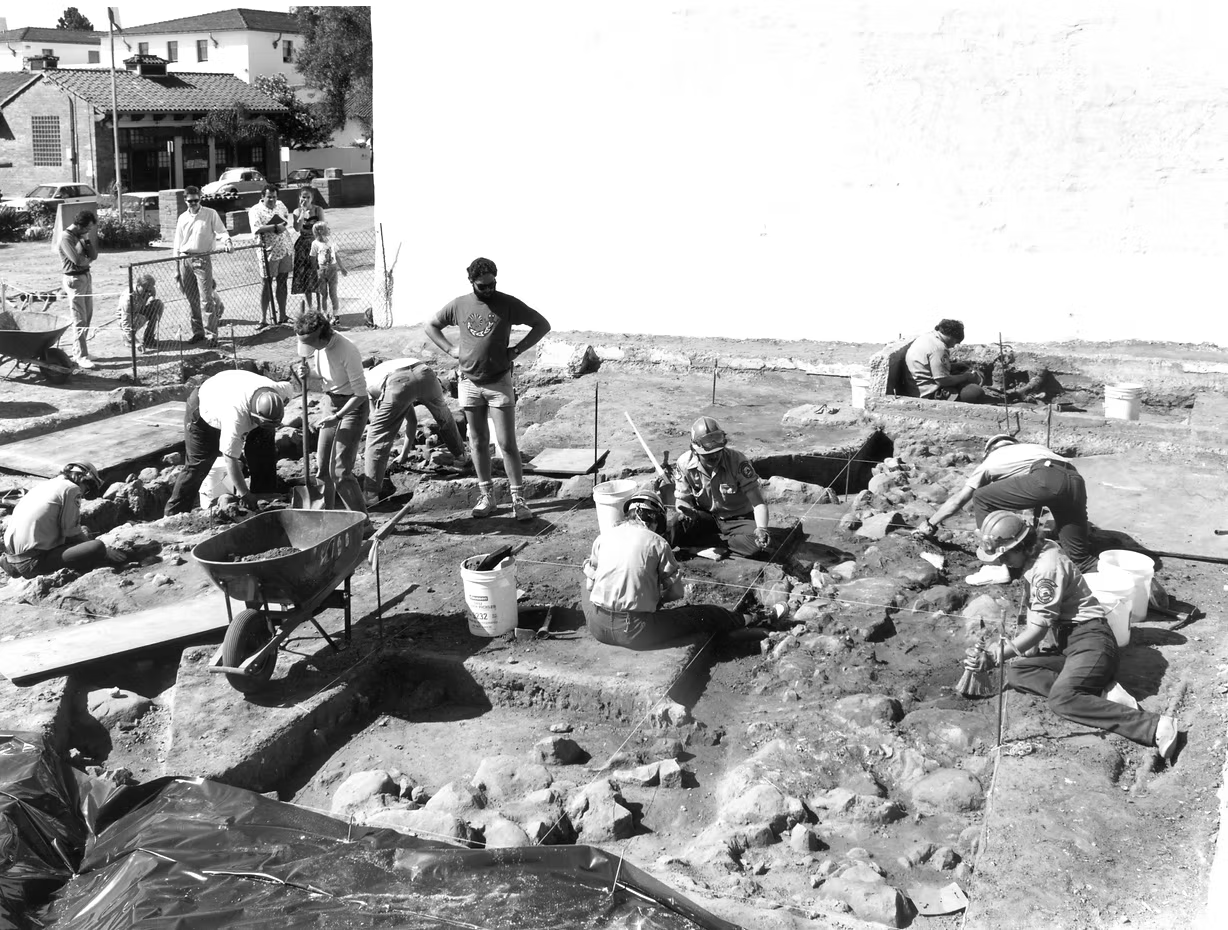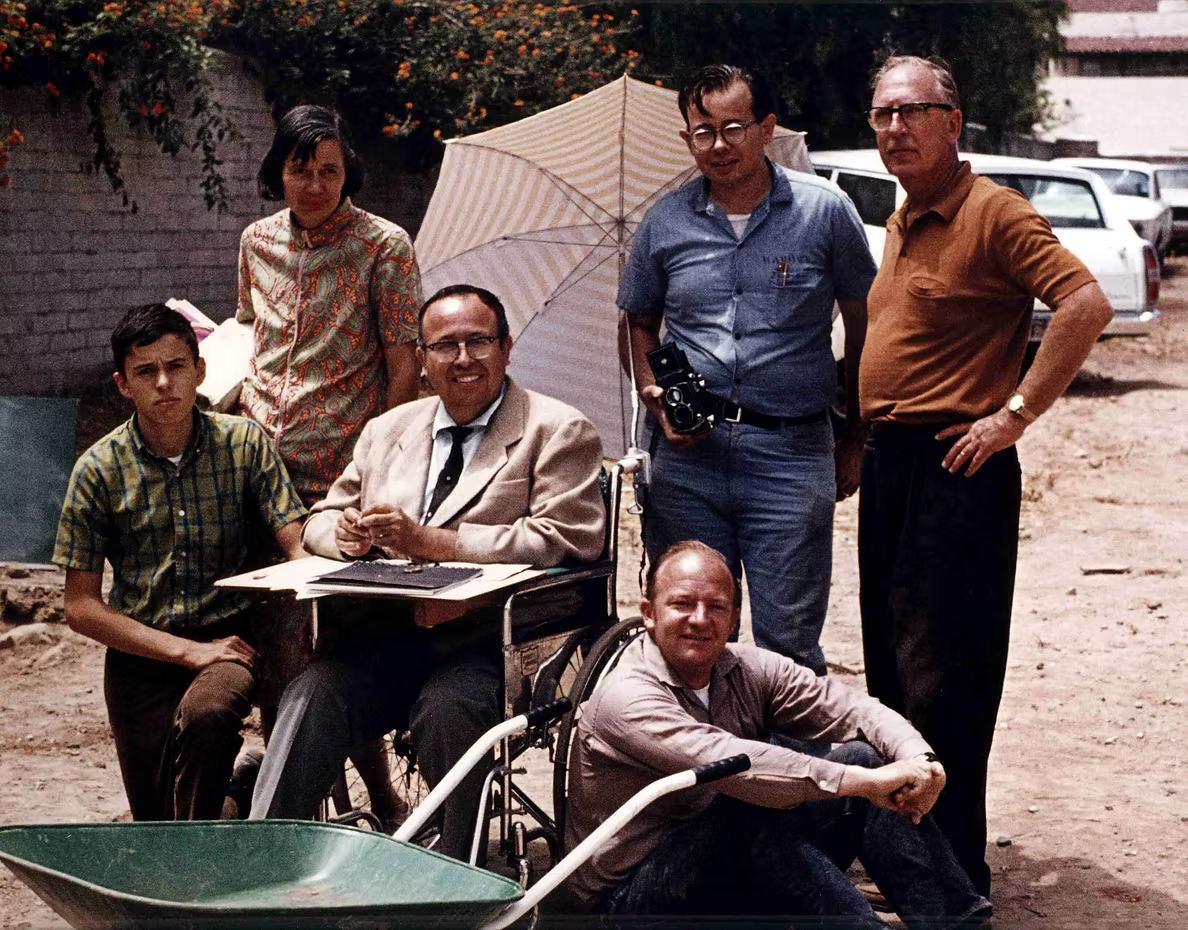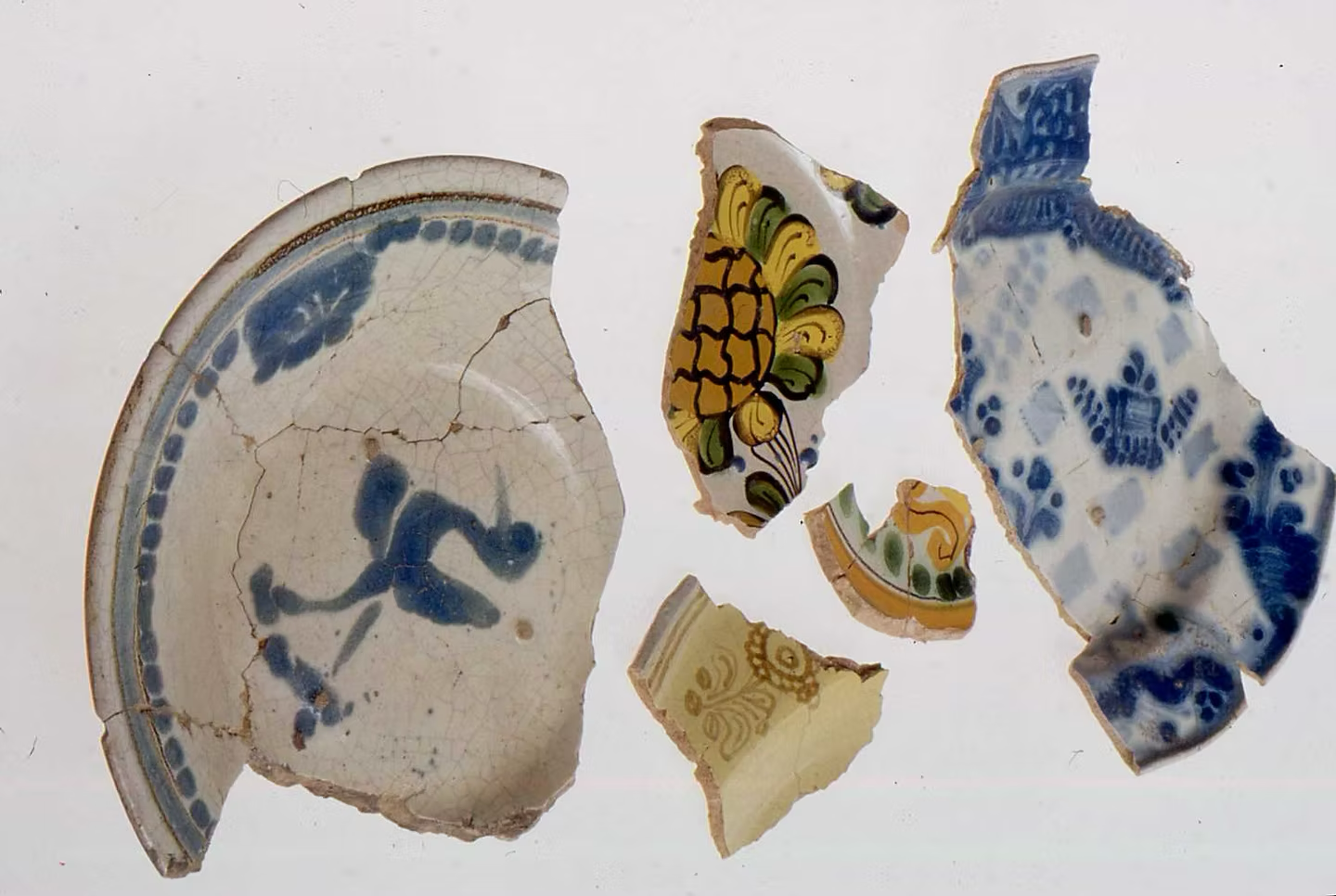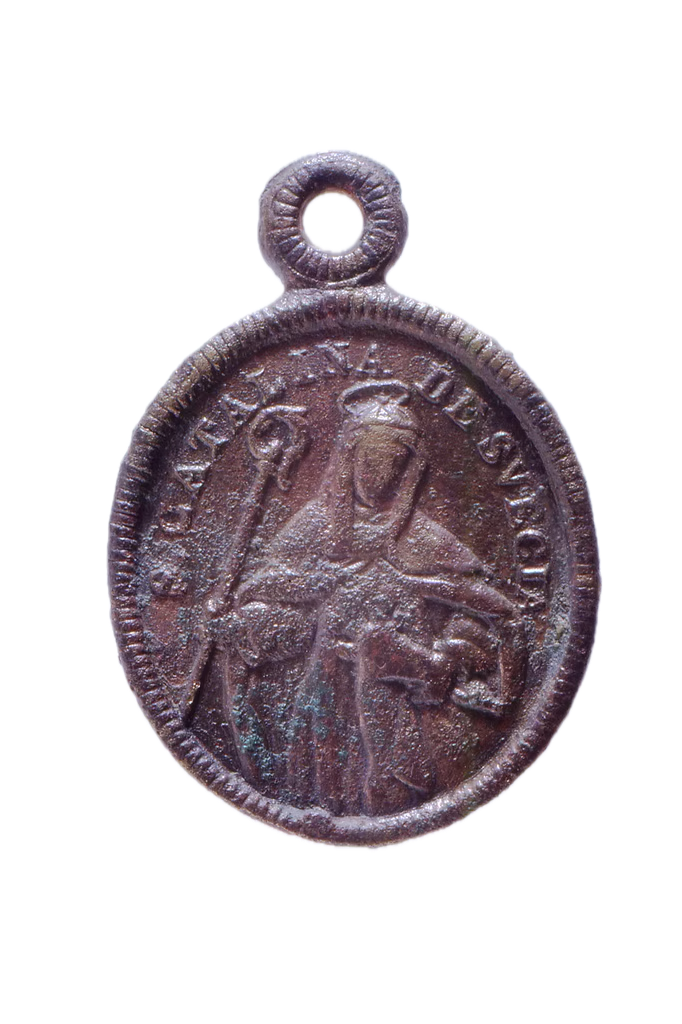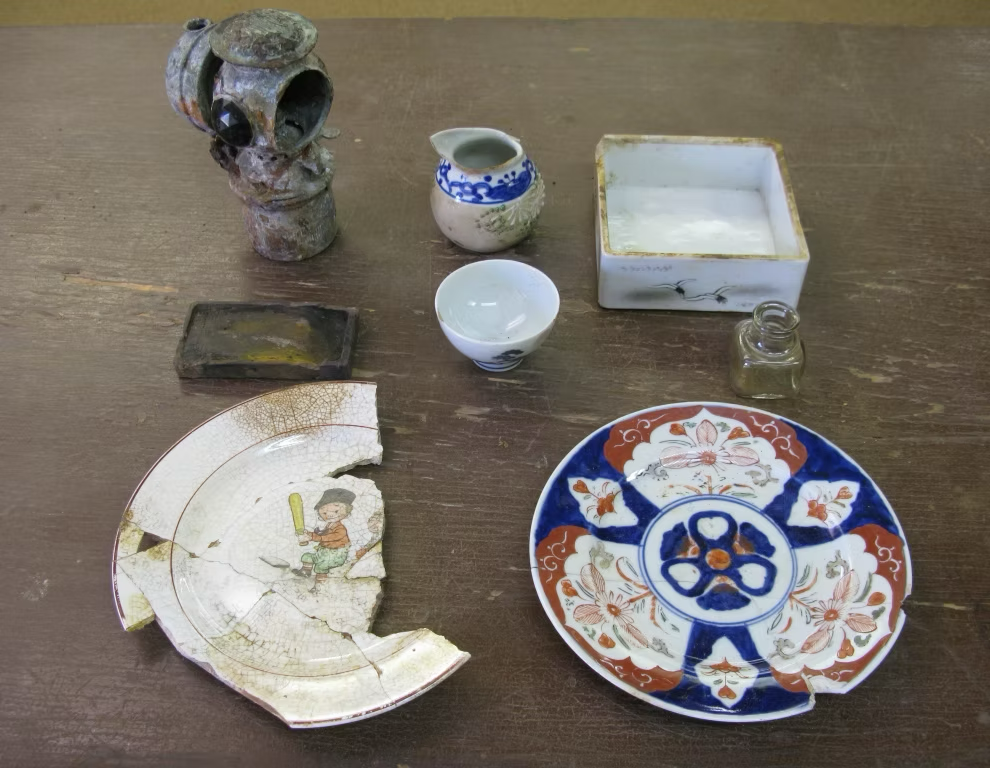
Archaeology of El Presidio de Santa Bárbara
The California Conservation Corps work on the 1987 Comandancia excavation, with Michael Imwalle overseeing. Photo by Wllm. B. Dewey.HISTORY
Archaeological research has played an integral role in the development of El Presidio de Santa Bárbara State Historic Park for more than fifty years. Renowned historical archaeologist James Deetz conducted the first known archaeological excavation of the Presidio site in 1961 behind the Cañedo Adobe. During the late-1960s and early 1970s a dedicated group known as the Presidio Volunteers focused excavations on the Chapel site and the adjoining Padre's Quarters. Using the 1788 Goicoechea/Fages plan as their guide, they also excavated at various locations around the quadrangle in order to determine the alignment and location of the original Presidio quadrangle. This information would provide the basis for the eventual reconstruction of portions of El Presidio de Santa Bárbara.
During the past six decades the site of El Presidio de Santa Bárbara SHP has been the focus of numerous educational archaeology programs. During the 1970s students from Santa Barbara Junior High School, Santa Barbara High School, and Santa Barbara City College participated in archaeological investigations. In 1983 an archaeological field school from the University of California, Santa Barbara began exploratory excavations in the northeast corner of the Presidio quadrangle. Field schools sponsored by California Polytechnic State University, San Luis Obispo in 1994 and 1995 concentrated on the identification of Presidio structures in the northwest corner of the quadrangle. In 1996, 1998, and 2000, California State University, Long Beach conducted field classes at the Presidio using various geophysical techniques. Seismic resistivity, proton and cesium magnetometers, and ground penetrating radar were introduced to students as they surveyed the Rochin Adobe property in search of the southeast corner of the Presidio. Archaeological education programs have also been conducted for Girls Incorporated, Girl Scouts, Boy Scouts, and Housing Authority of the City of Santa Barbara.
Between 1998 and 2002 the Santa Barbara Trust for Historic Preservation's archaeological staff conducted excavations in the vicinity of the northwest corner of the Presidio quadrangle. Northwest corner excavations have revealed scores of artifacts from Santa Barbara's earliest European settlement as well as archaeological features indicative of palisade and adobe structures, cooking facilities, and domestic trash disposal sites. Since 2005 the Cal Poly Archaeological Field Schools were held annually in the area of the Second Defense Wall. These excavations have provided more features and artifacts for interpretation as well as contributed valuable data for the development of plans for the Second Defense Wall Reconstruction Project.
The Santa Barbara Presidio in 1792, By Russell A. Ruiz. Courtesy of the Presidio Research Center, gift of Cliff Smith.CURRENT PROJECTS
SBTHP's archaeological staff continues to conduct field, laboratory, and archival research on a number of ongoing projects within El Presidio de Santa Bárbara State Historic Park as well as other SBTHP-managed properties.
Archaeological fieldwork consists of surface reconnaissance, geographic information system (GIS) survey, geophysical survey, excavation and resource recording. Laboratory work includes water screening, sorting, cataloging, and analysis. Ongoing research and preservation projects are being conducted at the Alhecama Theatre, the Santa Inés Mission Mills, and the Cota-Knox Building.

